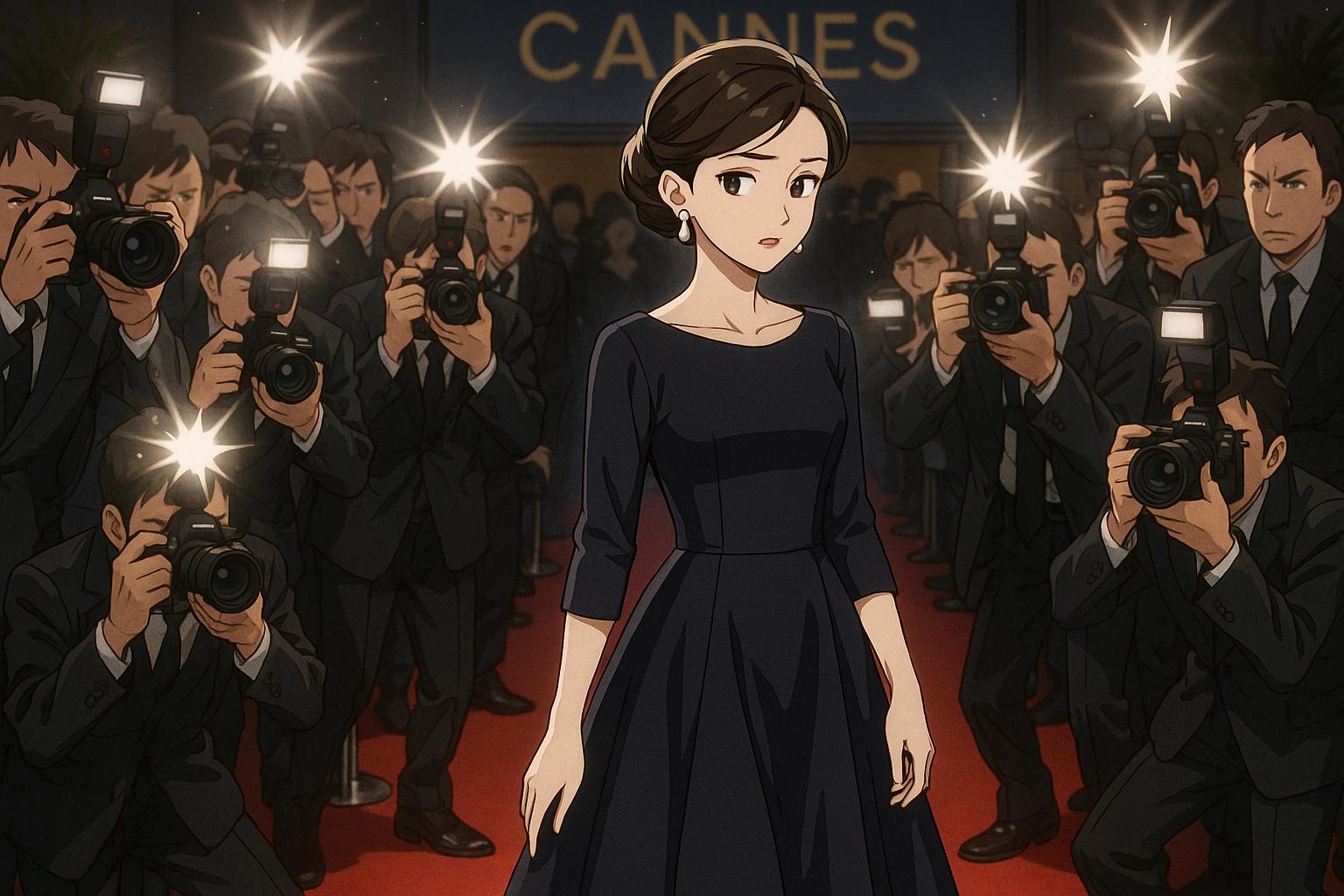The 2025 Cannes Film Festival is witnessing a significant shift in its red carpet etiquette, an evolution marked by a controversial ban on "naked dressing" and oversized gowns. Organisers have defended this newly implemented dress code with claims of maintaining "decency" and ensuring better guest movement, which they argue is vital for the festival's prestigious reputation. The exclusion zone notably affects celebrity favourites known for their daring fashion choices, such as sheer dresses that flaunt more skin than fabric.
Despite the strict guidelines, many attendees have defied the edict in striking fashion. Iconic figures such as Halle Berry and Heidi Klum made headlines with audacious outfits that arguably sidestepped the rules. Berry initially donned a more extravagant gown before opting for a less ostentatious style, responding to the newly established norms. “I’m not going to break the rules,” she stated, although her final choice did not quite align with her intent to adhere fully to the updated code.
This year's regulations also advocate for more conservative attire options, encouraging cocktail dresses, tailored pantsuits, or elegant tops paired with dressy bottoms — a directive perceived as an attempt to rekindle a more traditional sense of fashion at the festival. Critics, however, argue that these new standards stem from a patriarchal perspective, potentially stifling self-expression and body positivity — themes increasingly resonant within the contemporary fashion dialogue.
Fashion expert Karla Welch expressed concerns that the new dress code appears regressive, and she remarks on how such restrictions could undermine what should be a celebration of personal expression. Moreover, the directive could possibly set a precedent that influences other high-profile events, pushing them toward more conservative fashion standards overall. The debate around the festival's evolving style ethos is emblematic of wider cultural discussions regarding autonomy, body image, and the way women are viewed in the public sphere.
While iconic moments in Cannes history have showcased sheer fashion statements—like Jane Birkin in the 1970s or Bella Hadid's bold appearances in recent years—this year represents a stark contrast, echoing calls for decorum and restraint. Many, including feminist author Natasha Walter, view the prohibition on such bold attire as a regression. Walter remarked on the absurdity of suggesting women must adhere to restrictive fashion statutes while the films showcased often depict matters of nudity without hesitation. This contradiction starkly highlights the complexities involved in aligning personal expression with cultural expectations.
In addition to the nudity prohibition, the festival has outlawed voluminous gowns, particularly those with long trains that may obstruct guest flow or create complications during seating. This decision has sparked further debate over the idea that a woman’s worth should not rely on her ability to flaunt extravagant fashions. Critics suggest that such regulations only amplify a misconception that influences how women's contributions are perceived within the industry.
As the festival unfolds, it remains to be seen how these guidelines will ultimately influence fashion choices and cultural commentary surrounding one of cinema’s most significant gatherings. The Cannes red carpet, traditionally a space of glamour and bold statements, is becoming a focal point for discussions about respectability, freedom, and the ongoing tug-of-war between self-expression and societal norms. The high-profile attendees find themselves not only posing for photographs but also navigating the tensions between personal style and institutional expectations.
In observing the wide spectrum of responses to the new dress code, from adherence to flouting the rules, it becomes clear that the conversation around the evolution of red carpet fashion is far from settled. The attendees’ choices illuminate a broader cultural narrative—the balance between artistry, propriety, and individual autonomy continues to be a dynamic landscape.
Reference Map
- Paragraphs 1, 2, 4, and 5: [1]
- Paragraphs 3 and 6: [2], [4]
- Paragraph 7: [3], [6]
- Paragraphs 8 and 9: [7]
Source: Noah Wire Services
